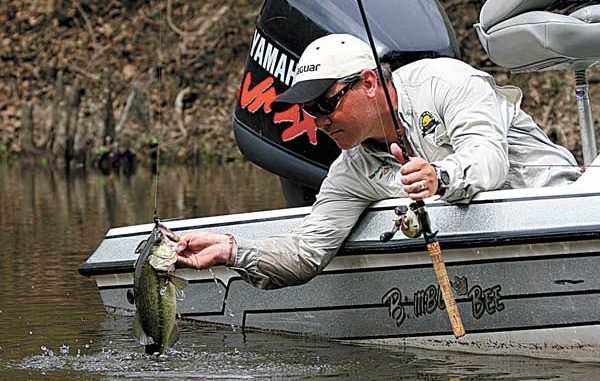
Follow these tips to put big bass in your boat on three of Louisiana’s major river systems.
During the early 1990s, it didn’t take much effort to stroke my ego by pitching a black/blue ringer worm to the many laydowns in the Ouachita River. Bass after bass with an occasional big fish or two thrown in put me very close to river-rat status.
The signs were pretty innocuous at first — a skipped chemistry class, calling in sick to work, pulling out of the dorm parking lot early in the morning with my Bass Tracker Tournament TX 17 in tow while cars full of drunk partiers were pulling in.
Although I was starting to fancy myself a river rat, it only took one bass tournament on the Ouachita River to make me realize that I was more river runt than rat. The real river rats were obvious because their weigh-in sacks were bulging from the weight of bass rather than water like mine.
Years passed without my graduating to river-rat status, and I am sad to say that, even today, I still look up in awe at those anglers who are known for catching the biggest bass Louisiana’s rivers have to offer. Apparently, they fish by an entirely different set of rules than most of us.
These are the rivers. These are the rats. These are their rules.
River: Ouachita
Rat: Dale Taylor
Rule 1: Fish at 24 Feet and Falling
North Louisiana Media Bass tournament director Dale Taylor pointed out that all the good oxbow lakes to the north and south of Monroe would be accessible with the river level at 24 feet. Catching the river while it’s falling from that level is important for catching big fish because it pulls them out of flooded cover where they are protected and piles them up in open water.
Rule 2: Look for Spawning Shad
Taylor caught the largest bass he’s ever caught by fishing spawning shad up D’Arbonne Bayou, a major tributary of the Ouachita River just north of Monroe on the west side of the river. The 10.2-pounder had trapped a ball of shad against a bluff bank. Taylor easily pinpointed the activity because the shad were doing what he called “climbing the banks” because they were trying to get away from nearby predator fish.
Taylor’s advice if you see spawning shad?
“Stop and fish because the big bass are there,” he said.
Go to our online archives to read the rest of this story, which first appeared in the May 2007 issue of Louisiana Sportsman magazine. Subscribe to the magazine to ensure you don’t miss a single information-packed issue.


